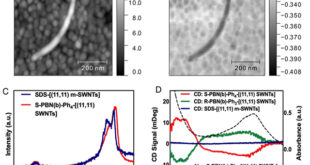Ceramics International, Volume 39, Issue 6, August 2013, Pages 6727-6734.
Tina Šetinc, Matjaz Spreitzer, Damjan Vengust, Ivan Jerman, Danilo Suvorov.
Advanced Materials Department, Jozef Stefan Institute, Ljubljana, Slovenia and
Laboratory for the Spectroscopy of Materials, National Institute of Chemistry, Ljubljana, Slovenia.
Abstract
We have investigated sol-precipitation, coupled with a hydrothermal treatment, as a common solution-based method for the preparation of SrTiO3 nanostructured powders. XRD, FTIR, TG/EGA, Raman and TEM were employed for a detailed structural characterization of the sol-precipitates in comparison with subsequently hydrothermally or thermally post-annealed samples. The sol-precipitates exhibited a pseudo-cubic symmetry and adopted the morphology of the hydrolyzed Ti-precursor. The structural distortions were attributed to un-removed OH− groups and A-site vacancies, arising in the crystal lattice, as a result of a low-temperature diffusion-controlled reaction. Furthermore, we demonstrated that the microstructural characteristics of sol-precipitates are directly responsible for the formation of extended defects, i.e., nanocavities, within the single-crystalline particles, appearing independently of the selected post-annealing treatment, i.e., hydrothermal or thermal. The study revealed that local distortions and peculiarities on the microscale, introduced by sol-precipitation, were not completely restored under vigorous hydrothermal conditions, but rather provoked the formation of new microstructural defects with an additional treatment
 Advances in Engineering Advances in Engineering features breaking research judged by Advances in Engineering advisory team to be of key importance in the Engineering field. Papers are selected from over 10,000 published each week from most peer reviewed journals.
Advances in Engineering Advances in Engineering features breaking research judged by Advances in Engineering advisory team to be of key importance in the Engineering field. Papers are selected from over 10,000 published each week from most peer reviewed journals.

